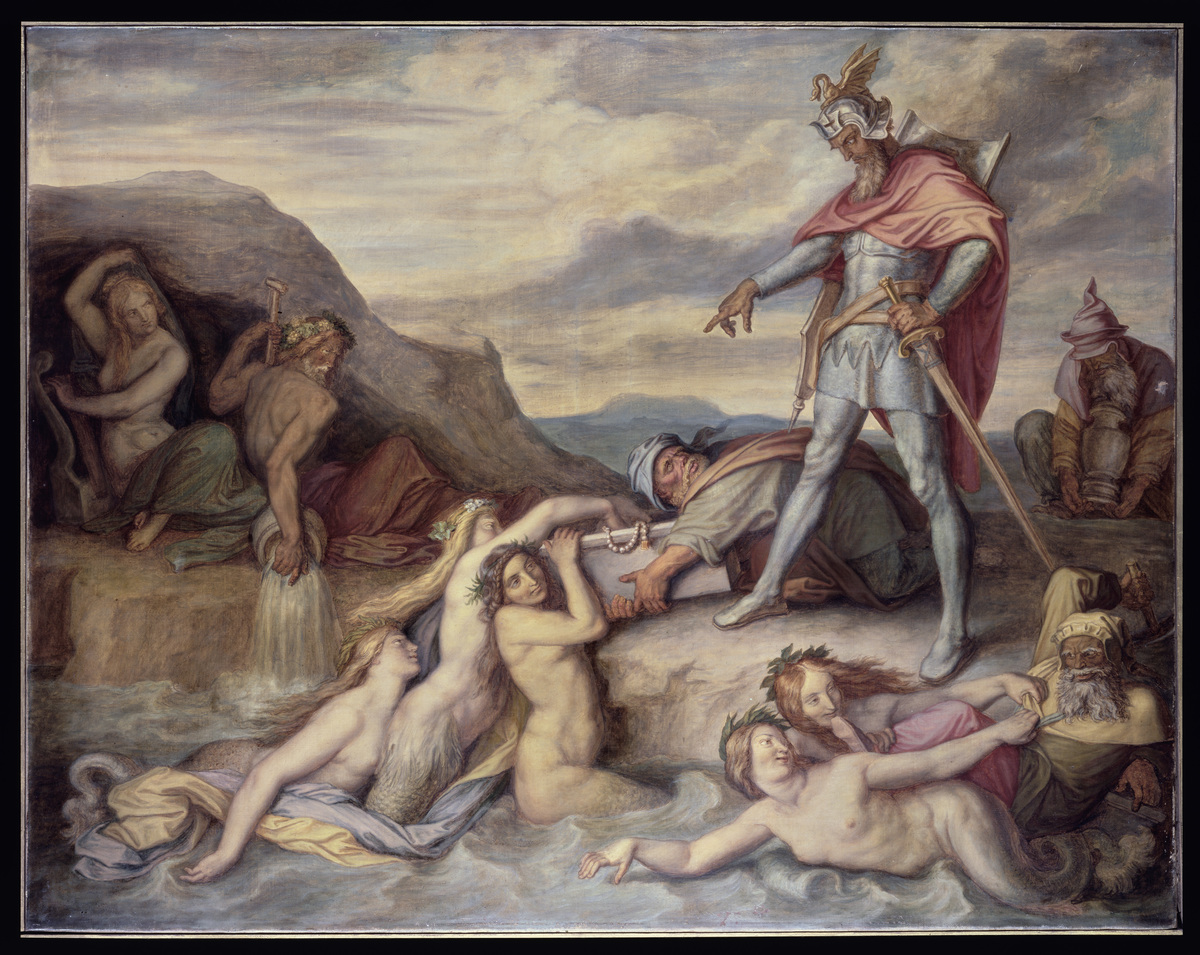Abstract
The painting illustrates a scene from the fourteenth-century Middle High German saga, The Song of the Nibelungs [Nibelungenlied]. During the Napoleonic wars, the trappings of the Germanic medieval world—Gothic architecture, “old German” [altdeutsch] dress, northern tales and legends—came to embody the national longing for a unified German identity. Therefore, it is not surprising that The Song of the Nibelungs, rediscovered in 1755 and praised by Goethe as worthy of a modern retelling, should have captured the imaginations of the Romantics. Such notable writers as Friedrich de la Motte Fouqué, Ludwig Tieck, and Friedrich Hebbel reworked the story in poetry, drama, and prose. New editions of the original poem were illustrated by Alfred Rethel, Julius Schnorr von Carolsfeld, and Peter Cornelius (1783–1867). By mid-century, the saga had achieved the status of a national epic. “For me, the hoard of the Nibelungs is a symbol of all German power, joy and majesty, all of which lies sunken in the Rhine and remains for the fatherland to win or lose,” Cornelius wrote in a letter in 1864. Its most famous adaptation, of course, was Richard Wagner’s opera cycle, “The Ring of the Nibelungs,” which was composed between 1851 and 1874.
